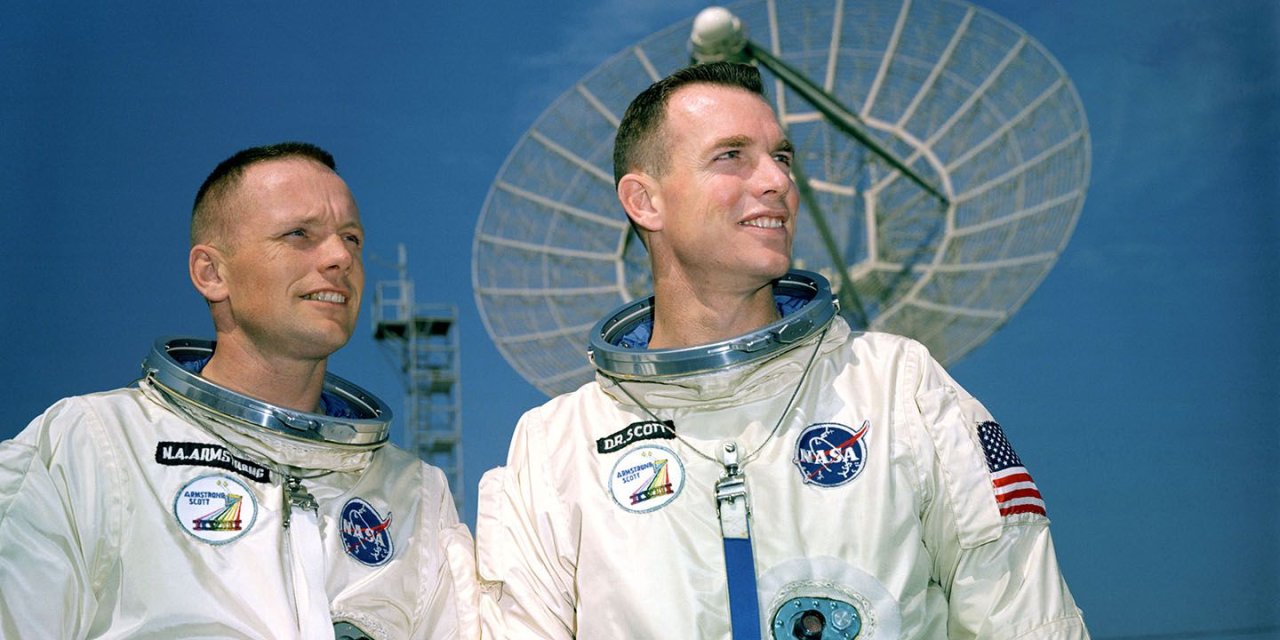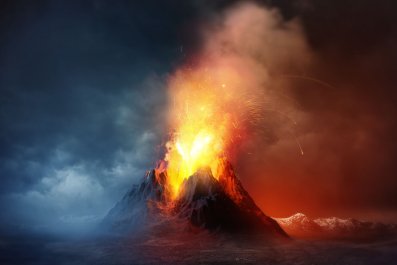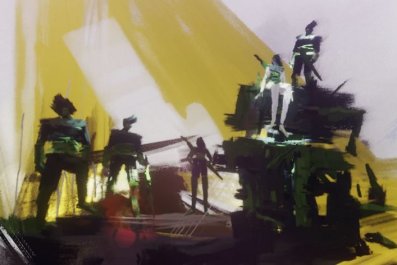In July, the world will mark 50 years since Neil Armstrong and Edwin "Buzz" Aldrin became the first humans to walk on the moon. But this month marks the anniversary of an almost-forgotten mission that, but for the skill of the astronauts on board, could have become a spectacular disaster for NASA. Author James Donovan tells the story in this excerpt adapted from his new book, Shoot for the Moon: The Space Race and the Extraordinary Voyage of Apollo 11.
By March 1966, the Gemini program, designed to perfect techniques that would be required for the Apollo lunar landing, was in full swing. The astronauts loved the two-man spacecraft—essentially a larger version of the Mercury capsule, it granted its pilot almost complete control, and the ability to change orbits. Gemini 8 was an especially ambitious three-day mission, since it would involve the first docking of two spacecraft and an extended spacewalk. It was the first spaceflight for both members of the crew: Neil Armstrong and David Scott.
Scott, 33, had become an astronaut in 1963. He had it all: good looks, confidence, a master's in astronautical engineering. He was a fighter pilot's son, a fighter pilot and test pilot himself, and married to the daughter of a retired Air Force general—clearly one of NASA's fair-haired boys, evidenced by the fact that he was the first in his astronaut class chosen to fly in space.
Armstrong, 35, would be the mission's command pilot. The former naval aviator and civilian test pilot had been selected as an astronaut in 1962 after being one of the few men selected to fly the rocket-powered X-15, a sleek, black experimental plane designed to explore the limits of an aircraft, and a pilot, at hypersonic speeds and extreme altitudes. He made seven X-15 flights and hoped to fly the Air Force's X-20 Dyna-Soar, an even more ambitious space plane, if it ever became operational. The X-20 program was an aerospace-engineering super-challenge—just the kind of project Armstrong loved and had spent most of his life working toward.
Born in a small-town Ohio farmhouse, Armstrong had earned his student pilot's license on his 16th birthday and soloed a few weeks later, all before he learned to drive a car. In 1947, he began studying aeronautical engineering at Purdue on a four-year Navy scholarship, and in 1949 he reported for three years of military duty, earning his wings as a naval aviator. The Korean War broke out in 1950; a year later, his unit was sent to the center of action. Armstrong flew 78 missions in a Grumman F9F Panther, once having to bail out after his jet sustained serious damage on a bombing run.
After the war, he finished his degree in 1955 and began work as a research test pilot. He'd been initially unimpressed with NASA's Mercury program, but after John Glenn's orbital flight in 1962, he changed his mind and applied to be an astronaut. Armstrong was quieter and humbler than most high-octane test pilots, but he already had a reputation for quick thinking and coolness under pressure. He would need both for his first flight into space.

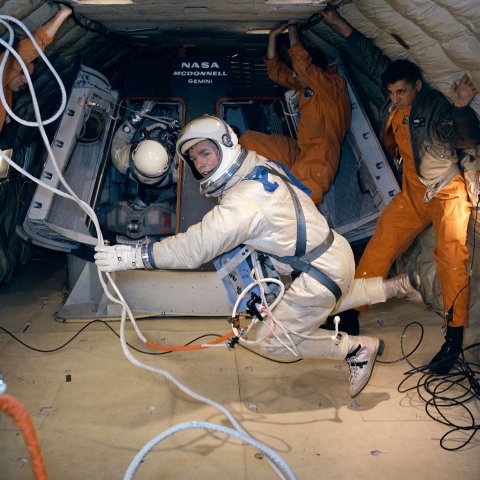
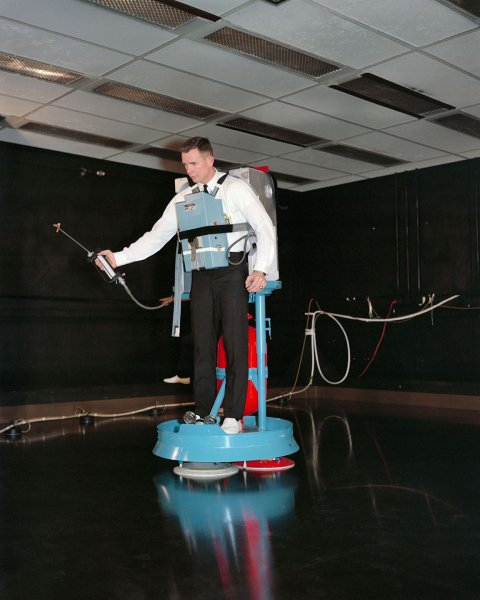
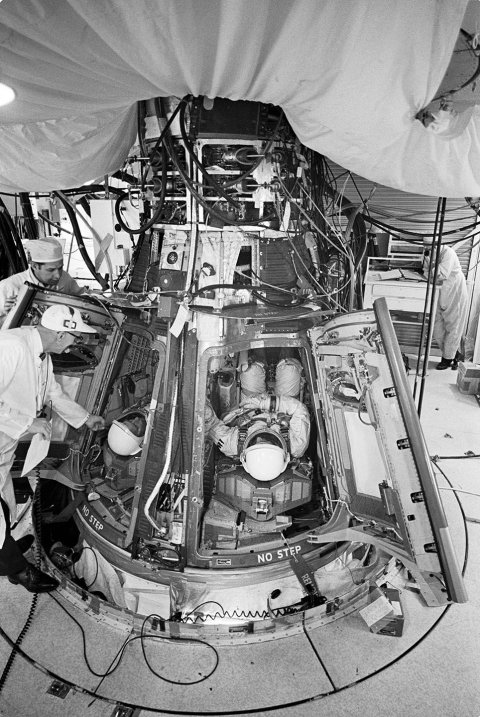
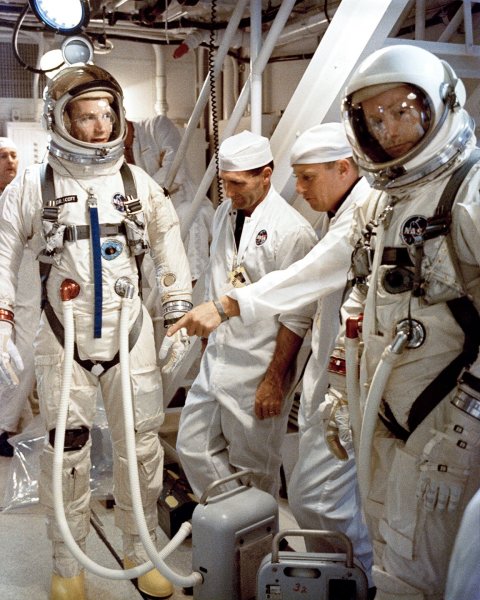
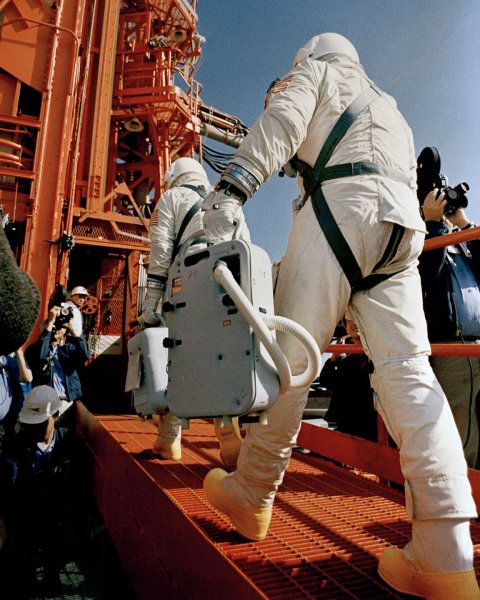
A lot was at stake. Although the first few Gemini missions had been successes, and the United States was seen as ahead in the space race, CIA spy plane photographs showed that the Soviets were building a monster rocket—one that could only be aiming at the moon. The Americans had much to accomplish before they could attempt lunar landing: rendezvous, docking, spacewalking. And the recent deaths of three astronauts while piloting their jet planes had dredged up familiar arguments about the relative expense and danger of piloted space flight versus robotic missions. The program sorely needed a "nominal" flight that would keep it on schedule and on target.
Instead, they nearly had a disaster. The astronauts would be pushed to their limits just to get back to Earth alive. And in the process, Armstrong would cement his reputation as the right man to take NASA's biggest step.
The mission started off well. Despite a series of equipment problems in the two weeks before the launch, at 10:41 a.m. on March 16, 1966, Gemini 8 lifted off smoothly. After reaching orbit, Armstrong initiated the first of nine thruster maneuvers—or burns—to catch the target, a modified Agena upper-stage rocket launched 95 minutes earlier and now in a higher orbit. They were aided by Gemini's guidance computer, primitive but effective in determining the locations of the two spacecraft and calculating the best transfer arc. Less than six hours after liftoff, Armstrong braked his ship about 150 feet from the silver-and-white, 26-foot-long Agena, shining in the bright sunlight. Rendezvous was accomplished.
After a half-hour of inspecting the Agena for problems, Armstrong slowly approached to within 3 feet using the Gemini's small thruster jets. He received permission to dock, a job that required exquisite timing and a feather-light touch. A few moments later, like a giant shuttlecock nuzzling a huge thermos, his craft's nose eased into a docking collar in the front of the Agena and latched on. "Flight, we are docked. It's…really a smoothie," said Armstrong. In Mission Control, there were cheers, backslapping and handshakes; Armstrong and Scott had just achieved the first docking in space.
Flight controllers—and virtually everyone else in NASA—were wary of the Agena. It was a glitch-prone craft; one had exploded shortly after launch five months earlier, during the Gemini 6 mission. They suspected the rocket thrusters might be faulty and had instructed Jim Lovell, acting as CapCom (capsule communicator) at a tracking station on Madagascar, to warn the Gemini 8 crew. Just before Armstrong and Scott passed out of communication range, Lovell told them, "If you run into trouble and the attitude-control system in the Agena goes wild, just…turn it off and take control with the spacecraft."
Armstrong and Scott would soon be out of range of the tracking station and incommunicado. They turned up the cockpit lights and pulled out their flight books, then began doing docking chores and checking command links between the two spacecraft. In a little while, they could begin to relax.
Gemini 8 had moved into night, and since the lights were on in the cockpit, the crew couldn't see much through their two small windows. After a couple of hours of taking care of Agena operations and general housekeeping, they'd try to sleep. Scott, especially, needed a good rest. He was scheduled to do a two-hour-plus spacewalk the next day.
Twenty-seven minutes after uniting with the Agena, Scott looked up at the control panel and noticed that they were in a slow 30-degree left roll. He told Armstrong, who used thrusters to correct it. After a minute or so, the roll started again. Remembering what Lovell had advised, Armstrong told Scott, who had all the Agena controls on his side, to turn off its attitude-control system. Scott did. The roll stabilized, but a few minutes later it began again, this time at a faster rate—then even faster. Armstrong ordered Scott to switch the Agena on and then off again in case it was an electrical problem. Meanwhile, he fought the motion with his attitude hand controller on the console between them, with little success.

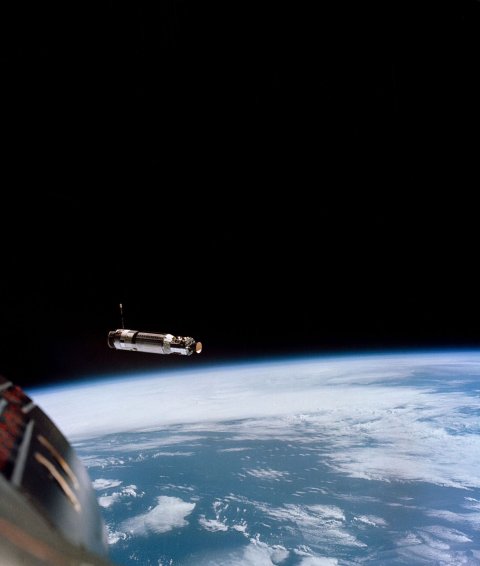

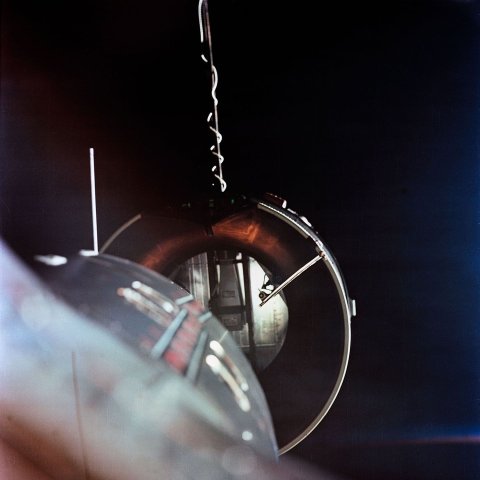
They were spinning in space while connected to a rocket full of fuel, and they could not call anyone for guidance. This was an emergency situation that they had not practiced for and that no one had imagined. Something had to be done and quickly, before the gyrations broke them apart, caused the Agena to rupture or explode, or ripped the Gemini from the adapter section that carried their power and life-sustaining essentials. Oxygen loss and quick death from asphyxiation would almost certainly follow. To make matters worse, Scott noticed that the fuel in one of their control systems was down to 13 percent.
Neither of them heard the loud cracking sound that they would have expected one of their own thrusters to make when firing. It had to be the Agena. "We'd better get off," Scott said to Armstrong.
"OK, let me see if we can get the rates of rotation down so we don't re-contact. You ready?"
"Stand by."
Once they undocked, the Agena would be dead to ground control. Scott set the rocket's recording devices so a ground tracking station could pick up its data as it passed overhead and learn why it had malfunctioned.
"OK, any time," he said. "We're ready."
"Go," said Armstrong, and as Scott hit the undocking switch, he quickly pulled them away from the Agena before the two spacecraft whirligigged into each other.
The Gemini rolled even more rapidly and began to tumble end over end. Both men had logged plenty of time on the human centrifuge, a mechanical study in sadism, and that experience proved invaluable to them now. Brilliant sunlight glinted off the spaceship's black nose, then darkness, then sunlight. Soon, it was spinning at a rate estimated to be close to two full revolutions per second. As Armstrong would later put it, with characteristic understatement, "Physiological limits were being approached."
Test pilots had a phrase for flights that went bad: gone to worms. This mission had swiftly gone to worms. "Buddy, we've got troubles," Scott said.
"I gotta cage my eyeballs," Armstrong said dryly. The two went to work trying to stabilize their craft.
About then, they came in range of another tracking station. Coastal Sentry Quebec, a ship in the western Pacific, south of Japan, with limited ability to communicate with Mission Control. The station crew could tell something was amiss. Their telemetry told them the Gemini had undocked, but they had no idea why. They would have only a few minutes to communicate before the spacecraft sped over them and out of range again.
"Gemini 8, CSQ CapCom. How do you read?"
"We've got serious problems here," Scott said. "We're tumbling end over end up here. We're disengaged from the Agena."
The CSQ CapCom could hear Scott, though the violent spinning distorted his speech, and scrambling antenna patterns fragmented the transmission. Voices faded in and out. The station could do nothing but acknowledge and ask what the problem was.
"We're rolling up, and we can't turn anything off," Armstrong said. "Continuously increasing in a left roll."
They were still spinning in roll, pitch and yaw at more than a revolution per second. Everything that had been loose in the cabin—charts, checklists, flight plan—was bouncing against the walls. Both men were being thrown around, and they were becoming dizzy. They had trouble seeing the overhead dials and switches. Nausea was soon to come, from the contents of their stomachs sloshing around, as was vestibular nystagmus, a sickening, dizzying sensation that would cause an uncontrollable movement of the eyeballs and blurred vision. Both men were seconds away from passing out, and if they did, the chances of recovery would be remote. They could hear Flight Control cutting in from Houston and asking CSQ what was going on, then CSQ trying to explain, and suddenly they passed out of range again for another 15 minutes.
Armstrong and Scott knew there was only one option: the re-entry control system and its two separate rings of thrusters in the nose of the spacecraft. "All we have left is the re-entry system," Armstrong said, his voice strained.
"Do it," said Scott.
There were half a dozen control panels around the interior of the spacecraft. The re-entry control switch was in an awkward spot, right above Armstrong's head. After countless hours in the simulator, each man knew the position of every control by feel; as fighter pilots, they'd always gone through blindfolded cockpit checks, and they carried that into their Gemini training. There were a dozen switches on the plate with the re-entry control switch. Somehow, Armstrong reached up and found the right one. He flicked it on, then threw the switches to activate the engines that would control the Gemini's re-entry into Earth's atmosphere.
Armstrong got no response. He asked Scott to give it a try—Scott got no response either. Without a hand controller, they wouldn't make it home. Still whirling and tumbling—the craft's thrusters were turned off, but there was no air to slow the capsule's movements—they started throwing switches again in case one was in the wrong position.
Just then, the hand controllers began working. With a delicate pulsing of the thrusters, Armstrong managed to slow down the violent spinning and then, finally, stop it. He turned off the re-entry control system to save fuel—they'd need it, and they had used about 75 percent of it just to stop the spinning. He reactivated his maneuvering thrusters one by one until he found the culprit: number eight, a yaw thruster, was stuck in the on position, probably due to an electrical short. They hadn't heard the thruster popping because it had been on the entire time. The Gemini, not the Agena, had been at fault.
A Gemini mission rule dictated that using the re-entry system meant that the mission must be aborted; if these thrusters developed a leak, the crew would not be able to get the craft into position for the critical retrofire that would stabilize it and return them to Earth at the proper angle. Attitude control was essential to re-enter the atmosphere safely. Flight director John Hodge, a silver-haired Englishman known for his imperturbability, knew he had to call an end to the mission. But where? And when? As soon as it was possible, of course, but could they find a prime or secondary recovery site?
After their 26-minute ordeal, Armstrong said, "Sorry, partner." He had planned to let Scott take the Gemini's controls later, and the spacewalk Scott had trained long and hard for wouldn't happen. But Scott knew they had no choice.
Twenty minutes later, after running through the options with his flight controllers, Hodge made his decision: re-entry in the seventh orbit, less than three hours away. If retrofire occurred as planned, the recovery point would be about 620 miles southeast of Japan. A Navy destroyer began moving at flank speed toward the position.
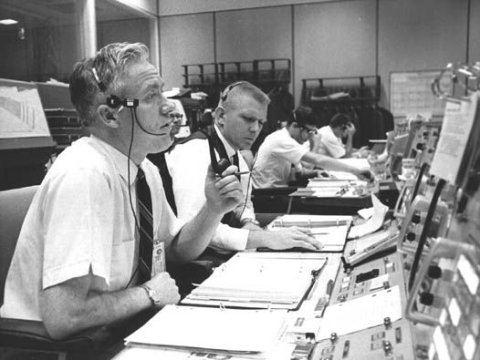
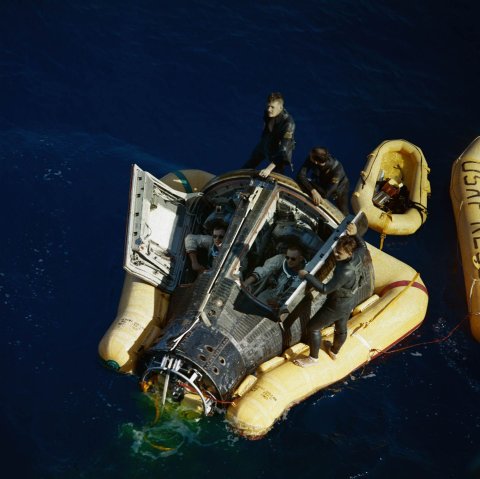
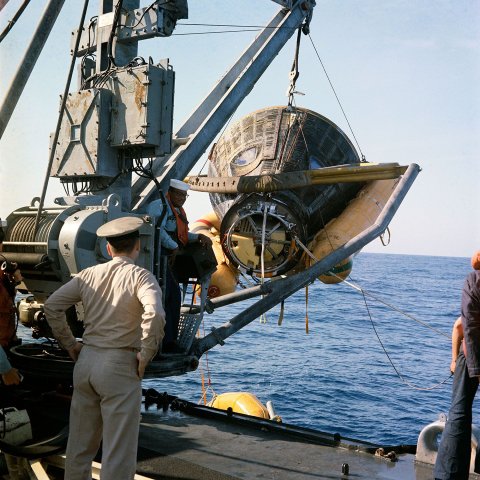
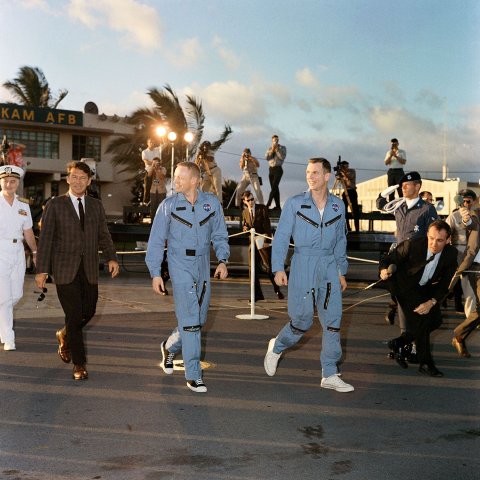
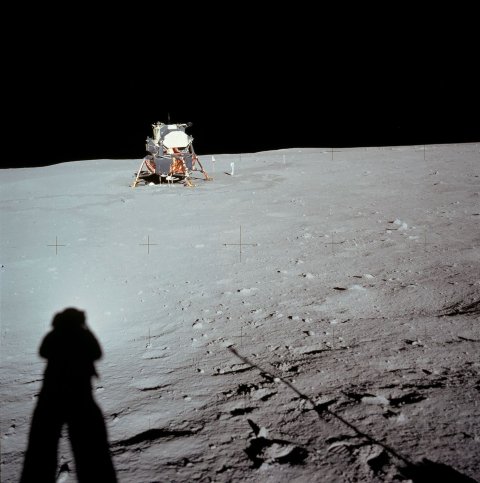
As Gemini 8 passed over Africa, Armstrong was concerned that they'd land in a remote area—and possibly on hard ground. The spacecraft was designed to handle that, but the impact would be excessive, even with their shock-absorbing contour couches, and since they had no control over the landing, it would be impossible to avoid ground obstacles or a steep hill or even a mountain. Scott worried when he saw the Himalayas getting larger below them as they re-entered the atmosphere. But as the craft plummeted to Earth, then activated its parachutes, the two astronauts were relieved to see the blue of water below them.
Twenty minutes after they made a hard splashdown in rough seas, three frogmen dropped from an Air Force transport plane and secured the spacecraft. Three hours later, the destroyer winched Gemini 8 on deck. The crew was healthy but worn out after their 10-hour-41-minute flight.
There was whispering among some of the newer astronauts that the two had panicked, but no spaceflight veteran thought that. They had followed the book and done what they had to do to survive—and done it superbly. Far from blaming the two, NASA officials commended the crew for their calm performance under extreme conditions. They were especially impressed with the commander. The flight only confirmed what they knew: Armstrong was one cool customer in a crisis.

→ Excerpted from the book Shoot for the Moon by James Donovan. Copyright © 2019 by James Donovan. Reprinted with permission of Little, Brown and Company. All rights reserved



